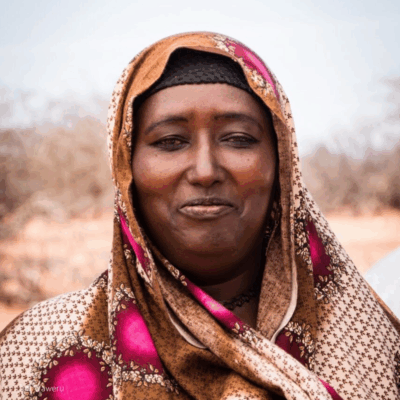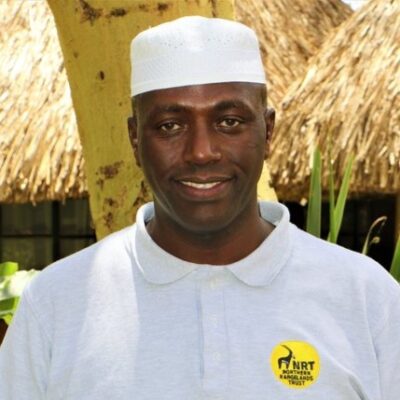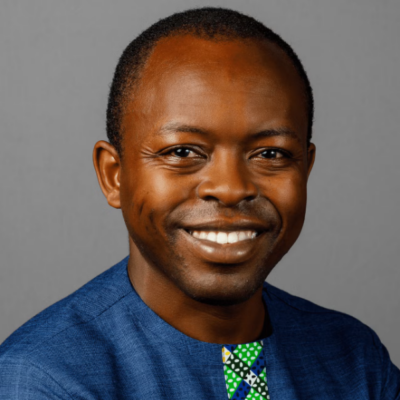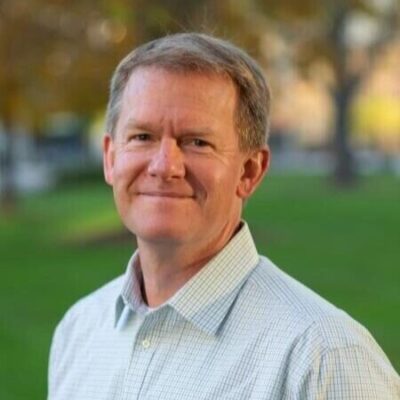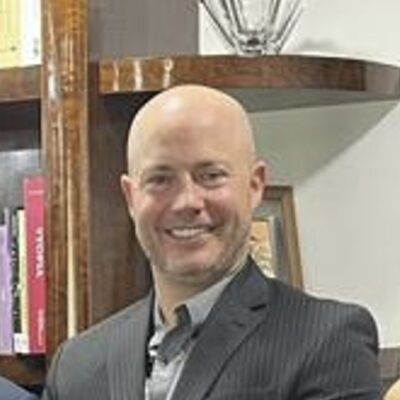Listeners:
Top listeners:
-
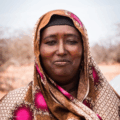 play_arrow
play_arrow
118 | Kenyan Herders Say Judgement Against Them Based on Forged Signatures / Continuation of Episode 117
-
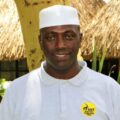 play_arrow
play_arrow
117 | Surviving Survival Internatinal, Part 1: Kenyan Elders Call Foul on International Media, NGOs
-
 play_arrow
play_arrow
116 | From Ticking Time Bomb to Demographic Dividend: James Mwangi and Kenya's Great Carbon Valley
-
 play_arrow
play_arrow
115 | Unpacking Donald Trump's Very Weird Environmental Orders
-
 play_arrow
play_arrow
114 | Michael Greene: Carbon Cowboy or Lone Ranger? Part 1
-
 play_arrow
play_arrow
113 | The Future of Environmental Finance: Strategies for Biodiversity and Climate Solutions, with David Hill and George Kelly
-
 play_arrow
play_arrow
112 | Fantasy Football and Dynamic Baselines: New Tools for Impact Assessment
-
 play_arrow
play_arrow
111 | The False Dichotomy Between Reductions and Removals (Rerun)
-
 play_arrow
play_arrow
110| Ecological Economics, Systems Thinking, and the Limits to Growth
-
 play_arrow
play_arrow
109 | How Brazil's Quilombola Communities are Planting the Seeds of Sustainability for Small Farms Around the World, with Vasco van Roosmalen of ReSeed
Transcript
Ilson López is the President of Belgium.
Not the European country, but the indigenous village in the district of Tahuamanu, in the Peruvian state of Madre de Dios, at the western edge of the Amazon forest. He’s part of the Yine people, who are scattered from here all the way to Cusco, the capital of the old Incan empire, about 500 kilometers to the southwest. The village gets its name from the alleged homeland of a rubber trader named Justo Bezada, who began working with the people of Belgium – or “Bélgica” in Spanish – in the early 1900s.
Rubber tapping suited them, says López, because it provided a way to earn cash income for schools, food, and health care without destroying the forest.
“Back in the day, we’d roll it into a big ball, which traders would take on a plane to Lima,” he says. “But that business started slowing down in the 1970s, and we’ve been struggling ever since.”
As the rubber trade dried up, the people of Bélgica grudgingly turned to logging – sparingly at first, but more and more as roads came, bringing logging trucks and loggers seeking lucrative cedar and mahogany.
Balancing Economy and Ecology
In 2002, the people of Bélgica won demarcation of their territory, and with it the legal right to earn income from its products. They divided the territory into zones for commercial activities like rubber tapping and ecotourism, as well as pure conservation areas for traditional hunting and fishing. But logging was something they struggled with – morally and logistically.
“We didn’t have any capacity to do the extraction right,” says Lopez. “So at first we operated in the black market – basically just letting loggers into the territory and getting paid for it – but the local authorities came to us and said, ‘You’re not doing this right.’ And that’s when we learned about certification.”
Specifically, certification under the Forest Stewardship Council, or FSC. You know those little labels you see on cabinets and tables and on boxes of paper?
The Forest Stewardship Council
Environmental NGOs like WWF created the Forest Stewardship Council in 1993, together with some forward-thinking timber companies, after the 1992 Earth Summit in Rio de Janeiro failed to deliver a real global compact. The idea was to create some sort of standard for sustainably-harvested timber to at least give the good guys a boost.
It’s based on ten principles that stakeholders agreed would make it possible to extract valuable trees without destroying the forest, as well as auditing procedures to make sure the practices were being followed, and then labeling, so consumers would know the difference – and, hopefully pay extra for the good stuff.
Indigenous Constitutions
At this was happening, indigenous people all across the Amazon were creating so-called Life Plans, or Planes de Vida, which are something like indigenous constitutions.
“The Life Plan is a document, or an exercise, that sets out our vision of where we want to go and helps us understand how to get there,” says Lopez. “FSC certification became one of the pillars of our Life Plan, because it was a way that we could improve productivity while saving the forest. We also included rubber tapping and conservation.”
The Sustainable District
It helps that Bélgica is located in the district of Tahuamanu, which is something of a sustainability success story, thanks in part to the Cardozo family. Three brothers and a sister, their parents settled here in the 1950s and become major landowners and political leaders, as well as proponents of sustainable development.
Alfonso Cardozo is the mayor of Iñapari, the district capital, and he lobbied to prioritize granting of concessions for groups that embrace FSC certification.
It was he and his brother, Abraham, who persuaded the people of Bélgica to join FSC, and it was one of their companies that helped the Bélgicans create and execute the sustainable logging plan needed to earn FSC certification. That meant meeting the FSC’s ten principles – ranging from hiring comuneros, or members of the community, to meeting ever-evolving standards for good land management and equitable community relations.
Lopez, however, says the Cardozos charged too much for their services, so the Bélgica ruling council switched to a second company, and then a third. Today, says Lopez, the people of Bélgica get 80 percent of the income on timber sold from the territory, and the current partner, a company called MADERYJA, has never missed a payment or been late.
FSC Impacts
Seventy percent of Peru’s certified concessions are located in Tahuamanu, and the neighboring concession of Maderacre, in which the Cardozos also held an interest, is also FSC-certified – and more accessible by jeep than Bélgica’s.
It spreads out over 220,000 hectares, divided into 20 plots of 11,000 hectares each, and the company works just one plot per year, so there are 20 years between harvests. The concession was cobbled together by a businessman named Erasmo Wong, who made a fortune building up Peru’s largest chain of supermarkets before selling the company and devoting his life to philanthropy and sustainable agriculture.
Environmental NGO WWF has been working with Maderacre to monitor the impact of its operations on wildlife, and Josefina Braña, who runs WWF’s Forest and Climate Program, says the early indications are promising.
“The jaguar population is thriving, and we’ve seen monkeys, tapirs, birds, agouti, ant-eaters, and sloths,” she says. “Biodiversity is thriving because of the reduced-impact logging they use.”
Reduced Impact Logging
The company uses drones to first identify valuable trees, then it sends out teams to survey the area from the ground.
“We use drones to identify the trees that are tall and thick enough to chop,” says Fermin Zapana Pilco, who oversees all extractive activities in the concession. “Then we map out routes to them, and finally we send out teams to see if the tree we want to chop will hurt other trees when it falls.”
The trees and patches of forest are separated into different categories: some are classified as high-conservation value (HCV), which is an official designation developed by the Forest Stewardship Council in 1999, meaning they’re not to be destroyed.
“Some will also just be immature,” says Pilco. “That means they’re too small to harvest, so we leave these for when we return to this plot in 20 years.”
If there are seedlings or high-conservation trees near a tree they’re targeting, they map out a way to cut the tree so it falls where no seedlings or high-conservation trees are, but if that’s not possible, they make a note of that and move on to the next tree.
“It costs us about 35 percent more to do FSC certification, as opposed to just doing what the law requires,” says Kroll. “But the market doesn’t really pay a premium – or, if it does, it’s 5 percent at most.
Reduced Waste
We come to a massive mahogany that’s passed all the criteria: it’s about 70 years old, two meters in diameter – six and a half meters around, but wider at the base, and 30 meters, or about 10 stories, high. It branches out about 18 meters up, so only the first six stories can be used for wood.
Put another way, it’s 40 tons of biomass, which means 20 tons of carbon, which will become 73 tons of carbon dioxide if the tree burns or decays and mixes with oxygen in the air. That’s 14-times as much greenhouse gas as the average passenger car emits in a whole year of driving.
About 40 percent of the tree will end up in flooring and furniture, which locks up 30 tons of that carbon dioxide, but what about the other 44 tons? That’s almost nine cars’ worth.
“Some of it will be used as biofuel for our ovens,” says Nelson Kroll, Madeacre’s forestry manager. “We use those to dry out the trees, but we’re also working on a deal with a local farm, which wants to use it for mulch and compost.”
A Natural Climate Solution
That’s good for the climate, because healthy soils absorb carbon, as well as nitrogen and hydrogen, and they reduce levels of carbon dioxide, nitrous oxide, and methane, three powerful greenhouse gasses. A landmark study published in 2016 showed that we can get 37 percent of the way to meeting the Paris Agreement’s 2-degree target just by improving the way we manage forests, farms, and fields.
That study, called “Natural Climate Solutions” identified 20 specific pathways do doing that – one of which is sustainable forest management, which is what FSC is all about, and another of which is improving soils. These natural climate solutions deliver more than one-third of the mitigation needed to meet the climate challenge, but they get just 3 percent of dedicated climate finance and 1 percent of climate-related media coverage.
The tree spreads out at the base, like a duck’s foot, and the worker injects his saw into the base vertically, straight up and down, building kind of a wall of wood on three sides of the foot, so these 40 tons will fall where he wants them to.
After it lands, workers begin chopping in and marking it with alphanumeric codes to identify the tree according to the forest inventory, the section of the tree, the date it was chopped, and of course the concession.
Traceability and Legality
The concession began marking the trees to meet FSC traceability requirements, but traceability has become a legal requirement, too, because the European Union and the United States have both banned the import of illegally-harvested timber. As a result, exporters are supposed to trace their timber to legally-sanctioned concessions. That doesn’t, however, always happen.
A 2014 analysis by Ecosystem Marketplace publisher Forest Trends, for example, dissected tropical deforestation from 2001 through 2012 and found that roughly 49 percent of all agriculture-related tropical deforestation in that period took place illegally, and roughly half of that illegally-harvested timber was exported.
That same year, a global coalition of governments, corporations, NGOs, and Indigenous Peoples’ organizations endorsed the New York Declaration on Forests (NYDF), which is a pledge to end forest loss by 2030. The NYDF is broken into ten goals, with #10 being improved forest governance.
Today, a coalition of environmental think tanks called NYDF Assessment Partners, of which Forest Trends is a member, published updated findings on progress towards Goal #10 and found that not much has changed.
Specifically, the report, called “Improving Governance to Protect Forests”, finds that law enforcement has improved slightly since 2014, especially on the demand side, and that traceability has also improved, but that average deforestation rates increased 42 percent since the NYDF was signed.
Countries like Peru, which has a sketchy history on this front, are trying to protect exports by improving enforcement – although the effectiveness of that is limited, too, because countries like China don’t put much effort into verifying legality of imports.
“There can be no effective global approach without the support and participation of China, the world’s largest importer of timber and exporter of forest products,” says Kerstin Canby, Director of the Forest Trends Forest Policy, Trade, and Finance Initiative.
“We are, however, seeing some improvement in enforcement of the European Union Timber Regulation,” she added. “By mid-2018, for example, EU Member States have implemented 17,735 checks on domestic timber, and they implemented 2,704 checks on imported timber in 2017, while more than 992 penalties have been assessed, and 21 cases went to court.”
If every forestry concession on the planet worked the way these two do, we’d have a fighting chance of meeting the climate challenge, but the district of Tahuamanu is an outlier, with a government willing to promote sustainable forestry and a citizenry willing to embrace it.
Episodes
117 | Surviving Survival Internatinal, Part 1: Kenyan Elders Call Foul on International Media, NGOs
April 13, 2025
116 | From Ticking Time Bomb to Demographic Dividend: James Mwangi and Kenya’s Great Carbon Valley
February 25, 2025
115 | Unpacking Donald Trump’s Very Weird Environmental Orders
January 27, 2025
114 | Michael Greene: Carbon Cowboy or Lone Ranger? Part 1
December 6, 2024



